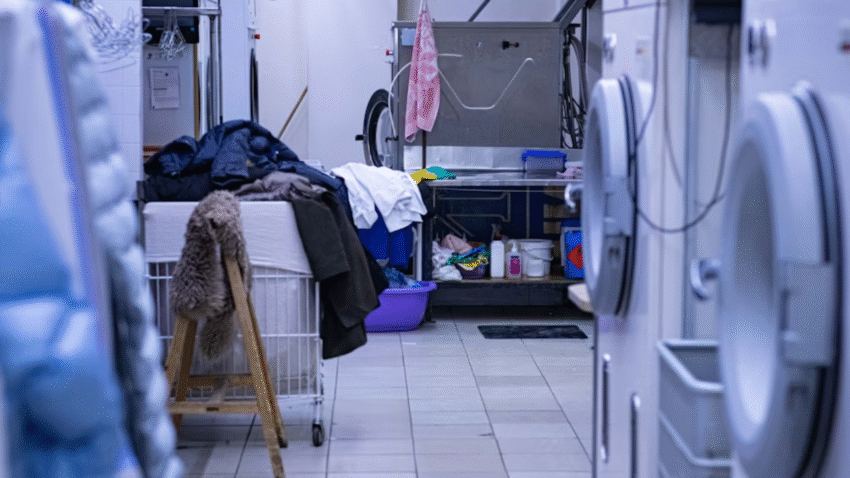Introduction
A leaking washer drain hose can turn laundry day into a messy chore. Whether it’s cracked, clogged, or simply worn out from years of use, replacing it is a task most homeowners can tackle in less than an hour. Learning how to replace a washer drain hose easily will save you money on repair calls and help prevent water damage to your laundry room. With the right tools and steps, you can get your washing machine back in action quickly and safely.
Why Replacing a Drain Hose Matters for Your Laundry Room
Your washer’s drain hose is responsible for carrying dirty water from the machine to your home’s plumbing. A damaged or poorly connected hose can:
- Cause leaks that damage floors, cabinets, and nearby walls.
- Lead to mold and mildew growth in humid laundry rooms.
- Disrupt your laundry routine by forcing you to pause washing until the problem is fixed.
- Reduce washer efficiency if water isn’t draining properly.
Replacing an old drain hose not only fixes leaks but also keeps your washer running smoothly alongside other laundry essentials like your dryer, shelves, and folding station.
Step-by-Step Guide to Replacing a Washer Drain Hose
1. Gather Your Tools and Materials
Before starting, make sure you have:
- A new drain hose (compatible with your washer model)
- A bucket or towel to catch water
- Screwdriver or pliers (depending on hose clamps)
- Adjustable wrench (if needed)
- Work gloves
2. Unplug the Washer and Turn Off the Water Supply
Safety first—unplug your washing machine from the electrical outlet. Locate the water supply valves (usually behind the washer) and turn them off to prevent accidental flooding.
3. Locate the Drain Hose Connection
The drain hose is typically attached to the back of the washer near the bottom. Follow the hose from the machine to the standpipe, utility sink, or wall drain.
4. Disconnect the Old Hose from the Washer
Place a bucket or towel under the connection point to catch any remaining water in the hose. Loosen the clamp holding the hose to the washer’s drain outlet using a screwdriver or pliers. Gently pull the hose free.
5. Remove the Hose from the Drain End
If the other end is inserted into a standpipe or hooked over a sink, simply pull it out. Be prepared for water to drip from this end as well.
6. Prepare the New Hose
Check your new hose for any kinks or damage before installation. Some hoses are adjustable in length—extend it as needed to reach your drain connection without strain.
7. Attach the New Hose to the Washer
Slide the hose clamp over one end of the hose. Fit the hose onto the washer’s drain outlet securely. Position the clamp about 1 inch from the end and tighten it with a screwdriver or pliers until snug.
8. Connect the Other End to the Drain
Place the opposite end into your standpipe, utility sink, or wall drain. Make sure it’s positioned to prevent it from slipping out during draining. Most hoses have a formed hook to help them stay in place.
9. Check for Proper Drain Height
Your drain hose should be installed at a height between 30–96 inches (76–244 cm) from the floor, depending on your washer’s specifications. Too low can cause siphoning; too high can prevent proper drainage.
10. Test the Connection
Plug the washer back in, turn on the water supply, and run a short rinse or spin cycle. Watch both ends of the hose for any leaks or disconnections. Tighten clamps if necessary.
Common Mistakes to Avoid
- Using the Wrong Hose Type
Always buy a hose compatible with your washer model to ensure proper fit and function. - Skipping the Clamp Tightening
Loose clamps can cause leaks during draining—make sure they’re snug but not overly tight. - Improper Drain Height
Installing the hose too low or too high can cause draining issues. Follow manufacturer guidelines. - Not Checking for Kinks
Kinks in the hose restrict water flow and may lead to backups. Ensure a smooth curve from washer to drain. - Forgetting to Test for Leaks
Always run a test cycle before calling the job done.
Extra Laundry Tips & Hacks
- Inspect Hoses Regularly – Check both drain and water supply hoses every 6–12 months for wear.
- Use a Hose Guide – A plastic hose guide can prevent bends and keep the drain hose secure in the standpipe.
- Keep a Spare Hose Handy – Having an extra hose in storage can save time in an emergency leak situation.
For more maintenance tips, check out our guide on How to Arrange Laundry Detergents and Cleaning Products—a tidy laundry space makes repairs easier.
Conclusion
Replacing a washer drain hose is a quick, cost-effective repair that can prevent serious water damage in your laundry room. With just a few tools and about 30 minutes of work, you can keep your machine running efficiently and your floors dry.
📌 Extra Tip: Mark your calendar to inspect your washer hoses twice a year. Early detection of cracks or wear can save you from expensive repairs later. Bookmark this guide so you’re ready the next time your drain hose needs attention.
